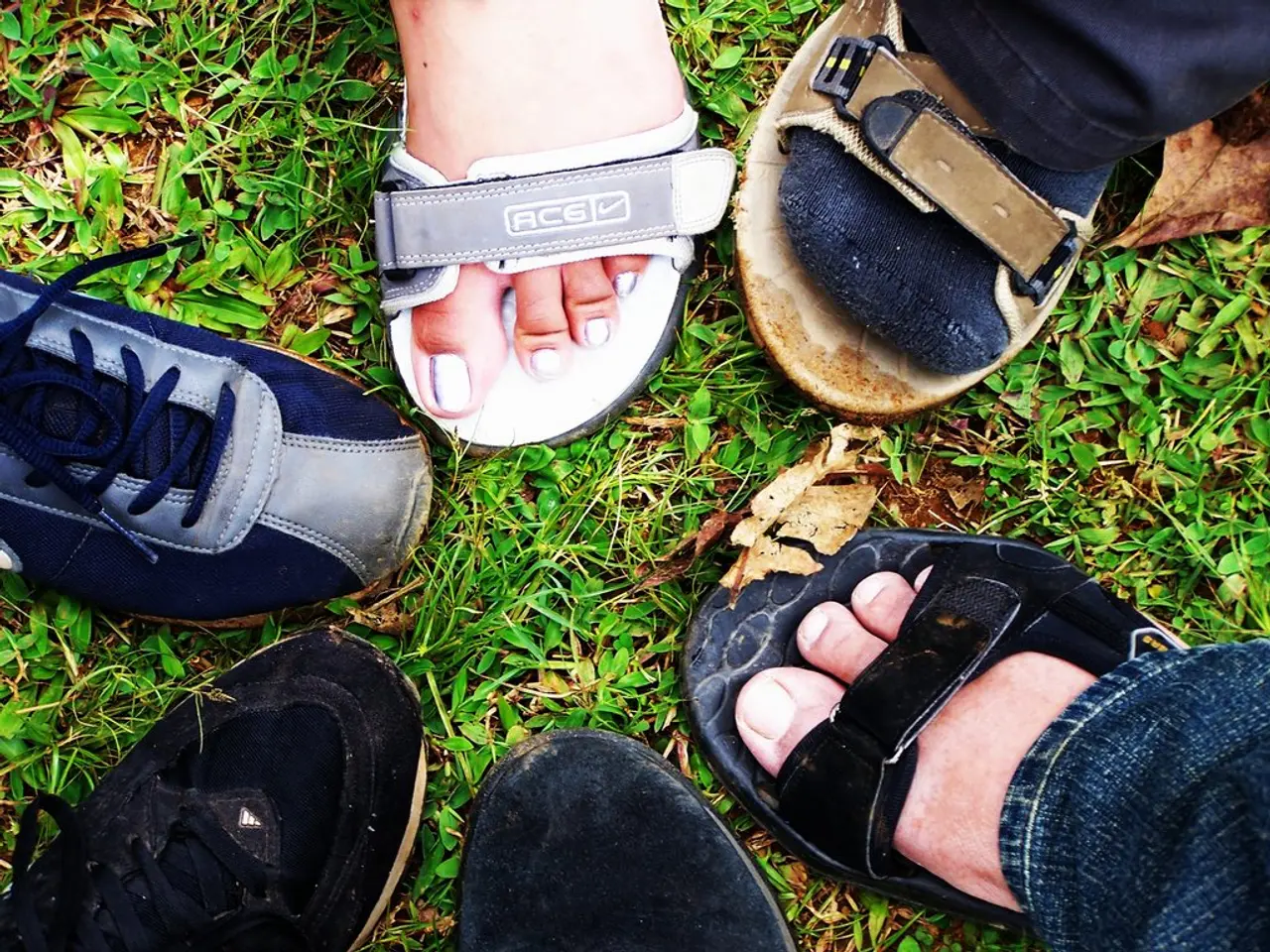Diabetic Sores: Origins, Manifestations, and Remedies
Diabetic foot ulcers are a potential complication of diabetes, typically referring to an open sore or wound on the skin that fails to heal [1]. These ulcers can cause significant discomfort and, if left untreated, may lead to serious infections.
The common causes of diabetic foot ulcers are primarily related to diabetic neuropathy (nerve damage) and peripheral vascular disease (poor blood circulation), both of which result from prolonged high blood sugar levels damaging nerves and blood vessels [1][2][3][5].
Key risk factors for developing diabetic foot ulcers include high blood sugar levels, diabetic neuropathy with loss of protective sensation, peripheral artery disease causing poor circulation to the feet, a previous history of foot ulcers or amputations, foot deformities that create pressure points, hard or thickened skin on feet, poor foot hygiene, improper toenail trimming, older age, smoking, obesity, hypertension, coexisting complications like eye disease, kidney failure, and heart disease, inability to perform regular foot care, and a history of walking barefoot or existing wounds [1][2][4][5].
Because early nerve and vascular damage may be asymptomatic, regular foot inspection and yearly professional foot checks are vital for prevention [1][3][4]. Diabetic foot ulcers often start with minor injuries, pressure, or skin breakdown and can escalate to serious infections if untreated [1][3][4].
If someone notices any trauma to their feet or other concerning areas, they should contact a doctor and receive prompt treatment. They should immediately seek medical attention if they see any signs of infection, including drainage or pus, redness or discoloration, warmth, swelling, fevers or chills, or firmness around the wound [1].
In summary, diabetic foot ulcers develop due to a combination of nerve damage, poor circulation, and external injury or pressure, with multiple systemic and local risk factors increasing the likelihood of ulcer formation and complications. Controlling blood sugar and careful foot care are crucial preventive measures [1][2][5].
If an infection is present, a doctor may prescribe antibiotics, with the antibiotic type and dosage depending on the infection organism and the severity of the infection [1]. Surgical options may be necessary to help encourage healing, relieve pressure on the area, and prevent further complications [1].
The best treatment for diabetic ulcers is prevention. To help manage foot health, people should regularly check their feet, attend appointments with their podiatrist, keep their feet clean, moisturized, and dry, wear shoes that fit correctly, check the skin daily for any blisters, cracks, cuts, ingrown toenails, and other minor injuries, keep sugar levels within target ranges, not walk barefoot, see a podiatrist for any injuries, quit smoking, and attend regular foot examinations every 1-6 months depending on certain risk factors [1].
Diabetic foot ulcers most often occur on the weight-bearing areas of the foot, such as the ball of the foot, heel, and tips of bent toes [1]. It's essential to remember that with proper care, many diabetic foot ulcers can be prevented or managed effectively.
References:
[1] American Diabetes Association. (2021). Diabetic Foot Ulcers. Healthline Media. [2] Diabetes UK. (2020). Diabetic foot problems. Diabetes UK. [3] National Institute of Diabetes and Digestive and Kidney Diseases. (2020). Diabetic Foot Problems. U.S. Department of Health and Human Services. [4] Mayo Clinic. (2021). Diabetic foot ulcers. Mayo Foundation for Medical Education and Research. [5] American Podiatric Medical Association. (2021). Diabetic Foot Care. American Podiatric Medical Association.
- Diabetic foot ulcers can be a serious complication of diabetes, often evident as an unhealed sore or wound on the skin.
- These ulcers may result from diabetic neuropathy (nerve damage) and peripheral vascular disease (poor blood circulation), both triggered by prolonged high blood sugar levels.
- Regular foot inspection and yearly professional foot checks are essential for preventing diabetic foot ulcers, given that early nerve and vascular damage may be asymptomatic.
- People should control their blood sugar levels and perform careful foot care to reduce the risk of diabetic foot ulcers, as numerous systemic and local factors can increase the likelihood of ulcer formation and complications.
- If an infection is present in a diabetic foot ulcer, medical treatment may include antibiotics and possibly surgery to promote healing, relieve pressure, and prevent further complications.
- Proper foot care includes regularly checking feet, attending appointments with a podiatrist, maintaining clean, moisturized, and dry feet, wearing properly-fitted shoes, and being mindful of potential injuries or conditions.
- To manage and prevent diabetic foot ulcers, it's beneficial to quit smoking, keep sugar levels in target ranges, and attend regular foot examinations every 1-6 months, depending on certain risk factors. Additionally, it is crucial to avoid walking barefoot and remember that ulcers most often occur on weight-bearing areas of the foot, such as the ball of the foot, heel, and tips of bent toes.




